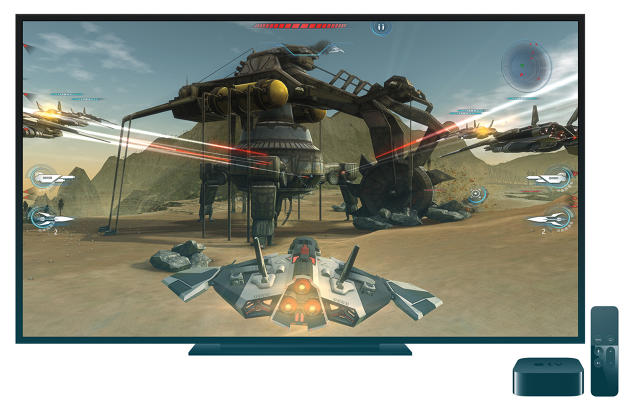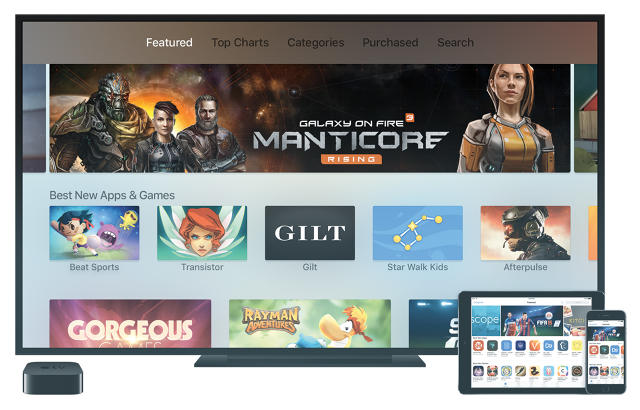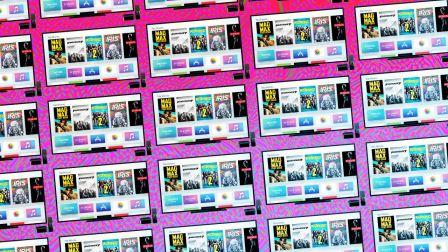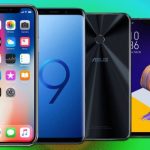Apple TV Pushes Apps Forward, But TV Is Leaning Back
Despite providing a level playing field for apps, the new Apple TV will thrive on video, indulge in games, and dabble in everything else.
Apple held off on putting apps on Apple TV as it watched Amazon enter the streaming TV box market and Google bounce back from the disastrous Google TV with Chromecast. But it didn’t completely sit out the opportunity for TV-based apps. It had learned a number of lessons from consumers projecting apps to previous Apple TVs via AirPlay. Meanwhile, while Apple TV didn’t offer a developer-accessible OS, the device’s interface to many popular streaming services such as Netflix, Hulu, YouTube, and Pandora lived in the blur between channels and apps.
That blur led to Roku becoming the set-top box with the broadest selection of video, appealing enough to start winning over TV manufacturers that have favored it versus building their own streaming platforms as Samsung, Sony, and LG have done. Indeed, the major streaming media services are sure to be the most-used apps on the new Apple TV. Out of the box, the previous version of the product had them preinstalled; now they must be downloaded. However, Apple has compensated for that setup issue by letting users more easily navigate content scattered among multiple services via Siri.

The Game’s The Thing
The Apple App Store has 1.5 million apps for iPhones and iPads, but by far the most dynamic category is games—beloved not only by consumers but by Apple, as they are among the apps that best showcase improvements in computing horsepower and performance-oriented technologies such as the company’s Metal architecture. If the iPad was a big iPhone, the new Apple TV is a gigantic iPhone that has been bisected between a remote control and an HDTV display which may be 40 inches or more.
For Apple TV in particular, games are a driving imperative. It’s not so much that Apple wants to capture PlayStation and Xbox One buyers. It’s that it wants to open up the casual mobile gaming market to the TV. That’s been a tough nut to crack for a host of Android-based devices, from Ouya and Mad Catz Mojo to Android TV-based devices such as Nvidia’s Shield.

Apps For Leaning Back
In its biggest stretch, Apple has showed off other apps for Apple TV, such as shopping apps (the QVC one is a convincing imitation of its cable network with a veneer of interactivity) and the Houzz interior design app. A broader base of consumers may be interested in those apps, and there may be some value to using them collaboratively on a big screen. However, they certainly won’t be the primary draw for the box. As Microsoft learned with Windows 8, a host of smartphone apps are simply too mobile-centric to make sense on a big, stationary display. And the immediacy and superior controls of smartphones will continue to make them the primary access point for most types of apps.
That said, if the future of TV is (some) apps, the future of apps may to an extent be TV. General-purpose apps designed for the big screen are aiming for an even more video-intensive, lean-back consumption mode than apps on the iPad. This is practically a necessity, because, as we’ve learned from many products dating back to WebTV, entering text character-by-character with a traditional TV remote makes typing on tablet glass feel as efficient as a stenotype. But we can expect some lessons that developers learn when creating TV apps to make their way back to mobile devices.
Like the iPod Touch, which became Apple’s incidental handheld game console, the new Apple TV could become the company’s incidental game TV console, But compared to the Touch, which grew less important as the iPhone itself became more pervasive, it stands a better chance of staying relevant, like the iPhone. Tim Cook recently questioned the need for channels in a world of streaming TV. And yet, Apple TV’s video apps are rife with names such as CBS, NBC, ABC, Fox, PBS, HBO and Showtime. Despite its vastly expanded capabilities, the new Apple TV is unlikely to change the fundamental usage model for TV the way the iPhone did for the cell phone—at least not until Apple can reinvent the couch.
Related: History of Apple in Under 3 Minutes
Fast Company , Read Full Story
(21)













